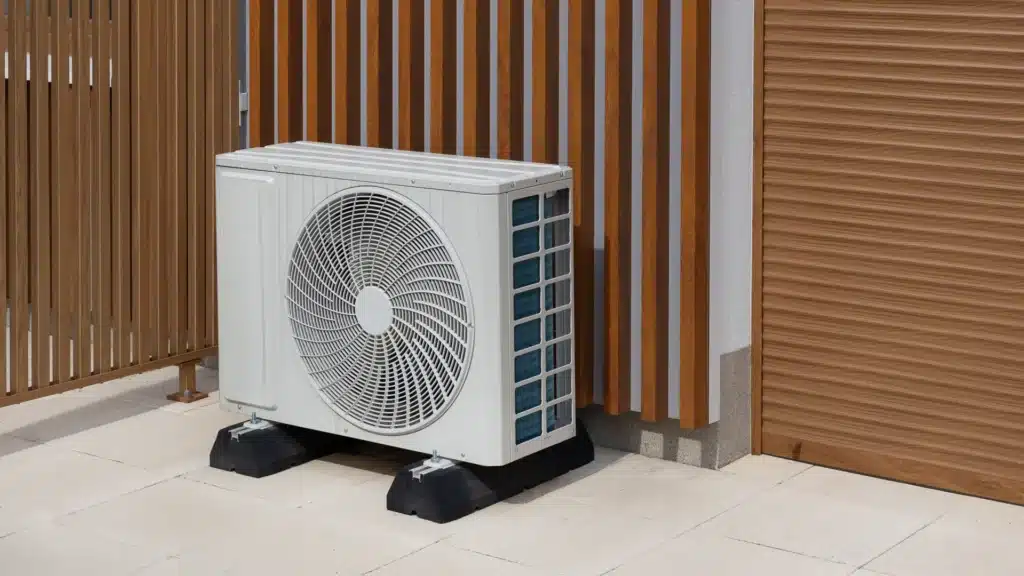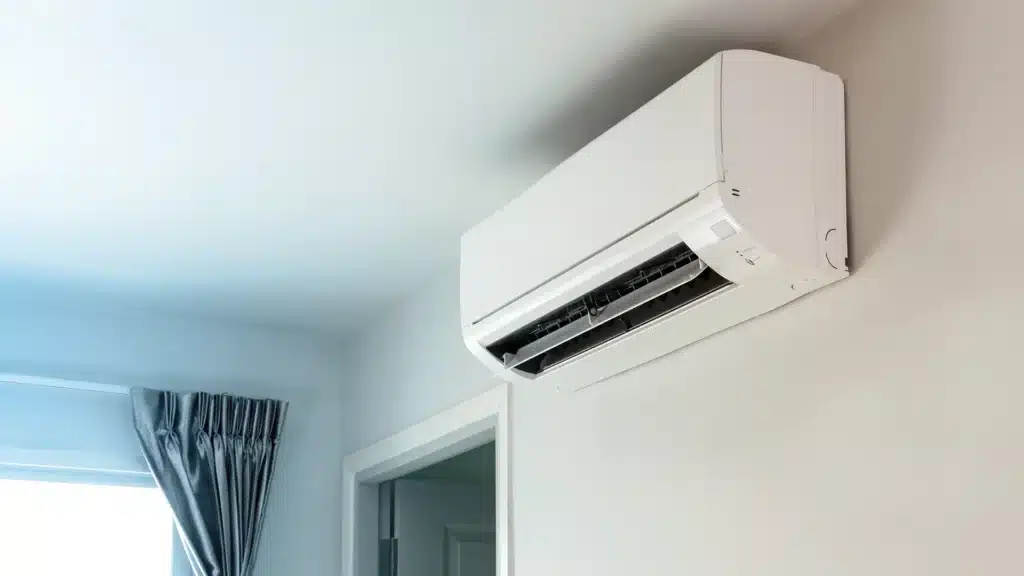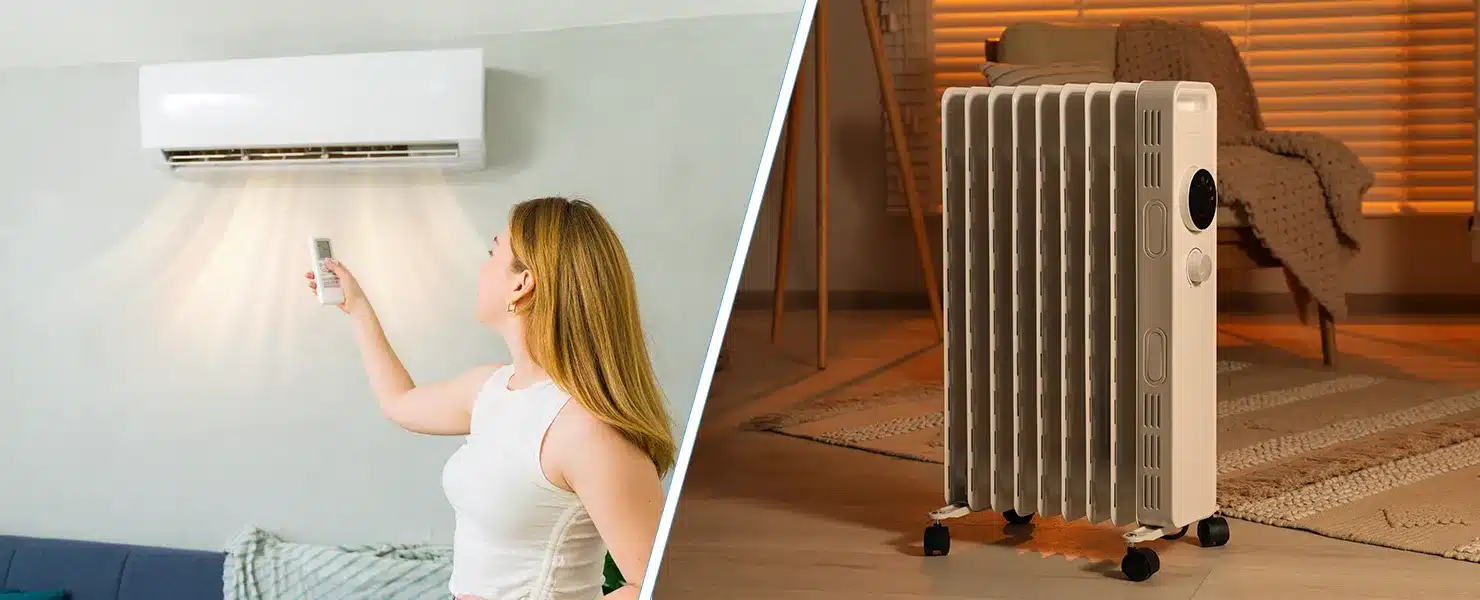As the temperature ebbs and wanes, you might be thinking about how to keep your home warm – and there are many different methods to choose between. Technological developments and changes in electricity and gas prices have influenced the market, ramping up the competition between air conditioning units and traditional heating methods.
Options for heating your home include reverse cycle air conditioning, gas heaters, electric heaters, fireplaces and underfloor heating. There’s no single best heating method for everyone, so you need to choose what to prioritise: upfront cost, long-term running costs, ease of use, control, danger, localised pollution and environmental impact.
But the two home heating systems leading the way in Australia are the reverse cycle ducted air conditioner unit and gas heaters. While both heating methods have their pros and cons, we recommend the reverse cycle air conditioner in terms of affordability, safety, energy efficiency, flexibility, air purification and eco-friendliness.

What are reverse cycle air conditioners?
Reverse cycle air conditioners are sometimes also called ducted systems. Ducted reverse cycle systems use energy for absorbing heat from the outside air and bring it inside rather than creating heat energy themselves.
These ducted – and split – systems can also help you save space in your home by requiring only one indoor unit instead of two, such as a heater and an air conditioner.
The running costs of a reverse cycle air conditioner depend on where you live and your electricity prices. In fact, a study conducted by the University of Melbourne found that reverse cycle heating was less expensive to operate than gas heating in every city studied.
While reverse cycle split systems may have a higher upfront cost, you must also consider their dual function as cooling systems. Because many Australians consider air conditioning to be a necessity in the summer, a reverse cycle system may not be as costly as it appears.

How does a reverse cycle air conditioner work?
Reverse cycle air conditioners work by passing refrigerant gas between indoor and outdoor units. Instead of using energy to create heat, the refrigerant absorbs thermal heat energy to capture heat from the outdoor air and bring it inside.
Reverse cycle air conditioners have a thermostat that allows you to adjust and maintain the ideal temperature in your home, so you don’t waste energy on overheating. In terms of environmental impact, it all depends on the type of energy you use.
Coal is used to power much of Australia, which has a significant environmental impact. Solar panels may help with some of this, but unless you have battery storage, you’ll be heating your home at night when the panels aren’t working.
These days, they have quite efficient heating in most climates; but many models don’t function effectively at extremely low temperatures, so if you live in a cold or mountainous region, other choices may be better for heating.
Gas Heaters
These heaters can be a good option if you are in a location that has a gas connection. They are relatively efficient and have long been seen as good value for money. Despite this tradition, rising gas prices and changing technologies have led the above-mentioned study to indicate that reverse cycle air conditioners are now cheaper to run.
Users also have to be careful because a gas heat pump can produce carbon monoxide, which can be deadly, and water, which can cause mould in your home. Flued heaters tend to take care of this issue, because they have a pipe that transports the waste outside. Unflued heaters leave their fumes inside the room, so ventilation is important for keeping safe.
Gas heaters tend to have lower upfront costs than reverse cycle air conditioners, however they can’t be controlled as precisely. While air conditioners may be more efficient heaters, it is hard to compare the environmental impact, because it depends on the local power source.
Electric Heaters
Electric heaters are portable and good for small spaces or occasional use. They work by using a heating element to convert electricity to heat. Radiant heaters reach high temperatures and often pose a significant fire danger. They function by emitting heat, which travels through the room and warms people and objects directly.
Electric heaters on the whole are cheaper upfront, but they are not very energy efficient, so tend to have higher running costs. They also aren’t suitable for heating more than just a single room or person. Because of their poor efficiency, they have quite a high environmental impact.
Fireplaces
As one of the most cosy ways to heat a home, fireplaces are often chosen for their ambiance as much as their heating abilities. They can have relatively high upfront costs, because a chimney will need to be installed for the smoke. The long term running costs vary widely. Those who live in rural areas may be able to get firewood for free. For others, it can be quite expensive.
Fireplaces are actually quite efficient as long as a slow-combustion wood stove is used to burn well-seasoned firewood. Assuming that your firewood is sustainable and that your home is otherwise powered by coal, heating your home with firewood can be better for the environment than other methods. Despite this, it is unsuitable for densely populated areas, because the smoke adds to local pollution.
Underfloor Heating
These systems have either heating cables or water pipes set in the floor. Electricity or hot water flows through them and warms the floor through conduction. The floor then radiates heat to the cool surfaces of the home. Because underfloor heating mode doesn’t create much indoor air circulation, a room becomes comfortable at lower temperatures than other methods.
Underfloor heating can be expensive to install in existing homes, so it is often best to consider for new builds. It is a relatively efficient way to heat a home and is comparable to a reverse cycle air conditioning system in both running costs and environmental impact.
The Best Home Heating System
Each of these heating methods has their own unique advantages. A fireplace can be great if you have free access to firewood, but not so much in the city. Underfloor heating is comfortable and efficient, but the costs to install it in an existing home can be prohibitive.
Gas heating is a reasonable all-round choice, but not everyone has access to it. And whilst reverse cycle air conditioners may have high upfront costs, these are offset by their cooling capabilities. They are also one of the most efficient and easy to control choices. In the end, the best heating for your home will all depend on your unique situation.
Reverse cycle air conditioning is designed to help you save money on your electricity bills, no matter what season it is. They have a number of advantages over gas heating in terms of cost, safety, energy efficiency, flexibility, warm air purification, and environmental friendliness.
For more information on how reverse cycle air conditioning works, check out this article on how air conditioning works.

